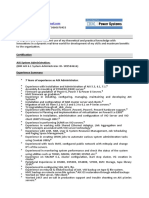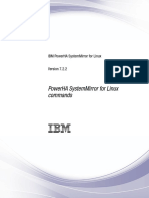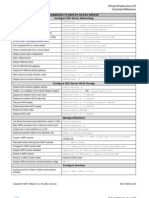50% found this document useful (2 votes)
8K views2 pagesVIOS Commands
This document provides instructions for managing virtual devices and network configuration on a VIOS. It includes commands for checking virtual devices and mappings, hardware configuration, IP addressing, logical volumes, virtual device creation and removal, storage array emulation configuration, and more. Key steps are to list virtual devices and mappings, check hardware configuration and IP addresses, create logical volumes for virtual disks, establish mappings between logical volumes and virtual devices, and configure network interfaces for storage array emulation.
Uploaded by
selvaraj1950Copyright
© Attribution Non-Commercial (BY-NC)
We take content rights seriously. If you suspect this is your content, claim it here.
Available Formats
Download as PDF, TXT or read online on Scribd
50% found this document useful (2 votes)
8K views2 pagesVIOS Commands
This document provides instructions for managing virtual devices and network configuration on a VIOS. It includes commands for checking virtual devices and mappings, hardware configuration, IP addressing, logical volumes, virtual device creation and removal, storage array emulation configuration, and more. Key steps are to list virtual devices and mappings, check hardware configuration and IP addresses, create logical volumes for virtual disks, establish mappings between logical volumes and virtual devices, and configure network interfaces for storage array emulation.
Uploaded by
selvaraj1950Copyright
© Attribution Non-Commercial (BY-NC)
We take content rights seriously. If you suspect this is your content, claim it here.
Available Formats
Download as PDF, TXT or read online on Scribd
/ 2


























































